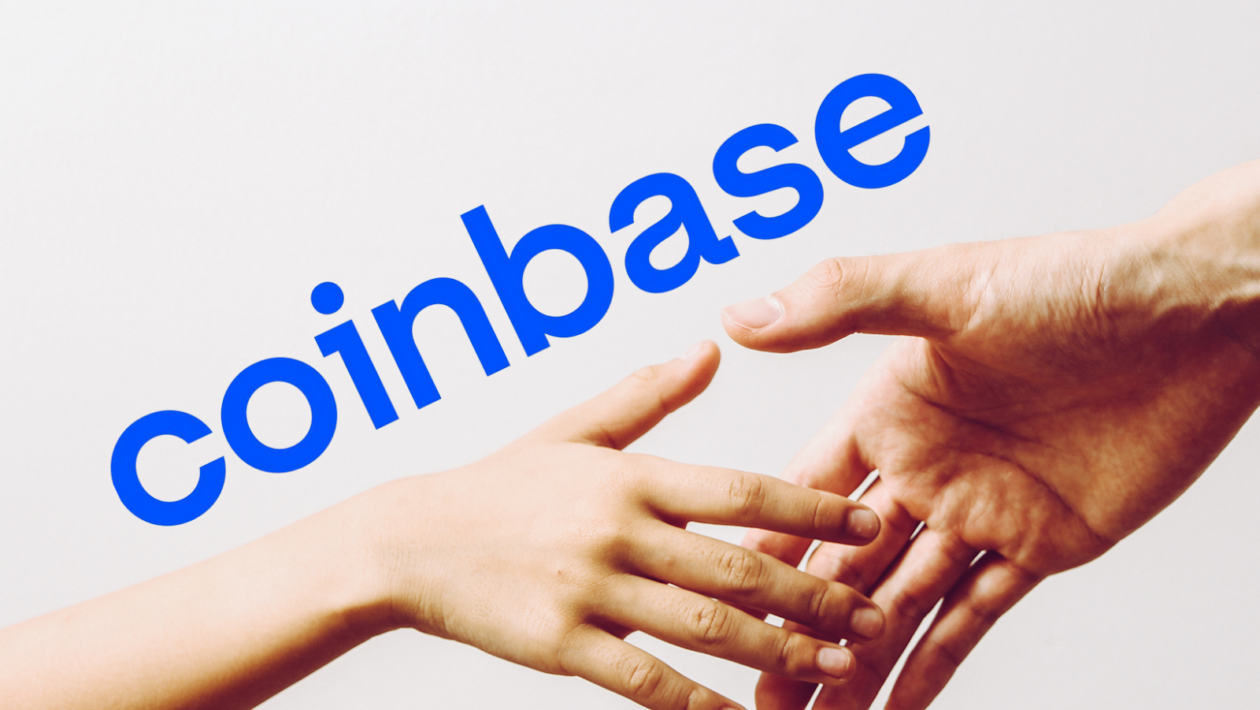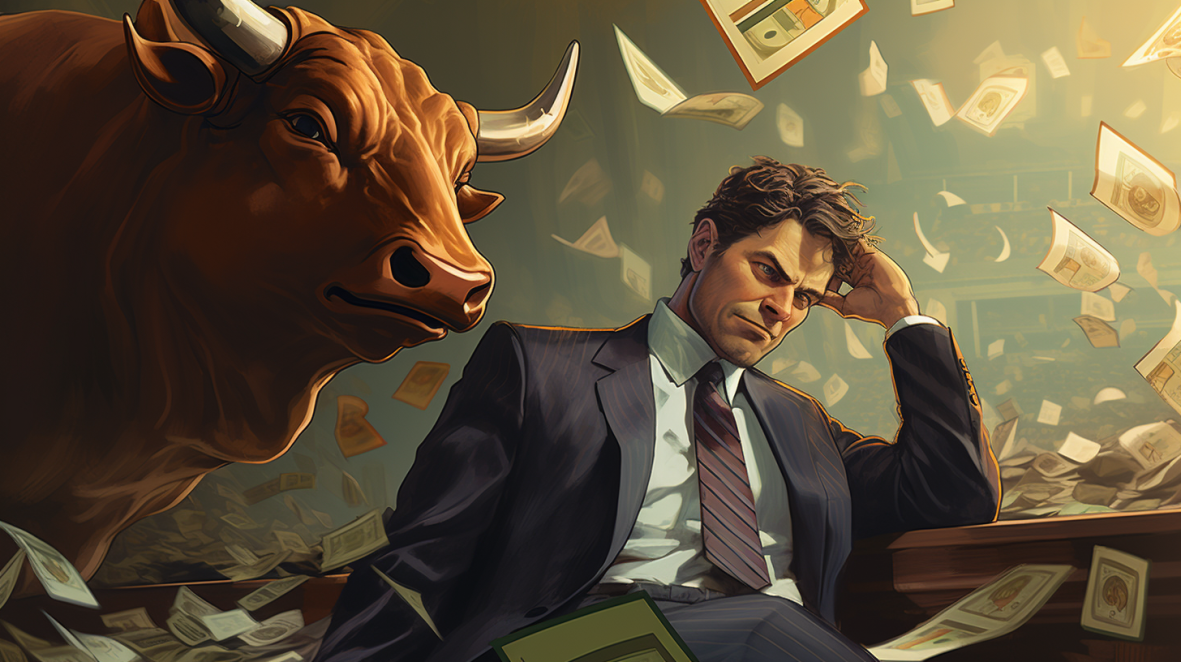In this issue
- Coinbase ventures into crypto lending
- NFTs: Losses pile up
- Singapore’s president-elect: What’s next for crypto?
From the Editor’s Desk
Dear Reader,
The more things change, the more they stay the same. The old aphorism sounds better in the original French (plus ça change, plus c’est la même chose) but it’s true in any language and, as we watch institutional capital mobilize in crypto, it’s arguably applicable to our industry as much as it is to anything else.
Take, for instance, Coinbase’s launch of a crypto lending service for institutional investors in the U.S. This is a fairly clear sign that – at least in the eyes of the exchange, America’s biggest – the road to widespread crypto adoption runs through TradFi.
Coinbase’s involvement with such Wall Street super-heavyweights as BlackRock, for whose planned Bitcoin exchange-traded fund it aims to provide custody services, and Fidelity, which it is seeking to serve as a surveillance partner, does little to counter that impression.
TradFi has long flirted with crypto and digital assets, which is understandable, given the latter’s multiple points of appeal as an asset class, a potential source of operational efficiencies, a paradigm-changing innovation, and an unapologetic means of making money. Yet the relationship between the two remains unconsummated.
That’s not because there’s a lack of va-va-voom, but simply because the ecosystems involved differ so markedly. Combining two types of radically different infrastructure, after all, takes a lot of time and an enormous amount of effort.
Regulators and other finance sector authorities worldwide have been finding that out as they’ve tried to get TradFi to consume crypto. Singapore’s central bank is further along in that process than most, having roped some of the most established names in finance into its digital asset development strategy in a bid to tame the phenomenon. More distracted authorities, such as the U.S. Securities and Exchange Commission (SEC), seem to be making a meal of the process.
But even the gnomes of Singapore’s Monetary Authority will find out, as they seek to preserve the finance sector’s status quo while giving it a powerful dose of innovation, it’s not just crypto that’ll have to change.
Until the next time,
Angie Lau,
Founder and Editor-in-Chief
Forkast.News
1. Strategic offering


Following the vacuum left by collapsed crypto lenders such as Celsius Network, BlockFi and Genesis Global, which saw significant losses in 2022 that drove them into bankruptcies, crypto exchange Coinbase has launched a crypto lending program for institutional investors in the U.S., according to a filing with the U.S. SEC last Friday.
- The program will allow institutions to “lend digital assets to Coinbase under standardized terms in a product that qualifies for a Regulation D exemption,” a Coinbase spokesperson said in a Tuesday statement seen by Bloomberg. The exemption allows companies to offer a limited amount of securities without registering with the SEC.
- According to a filing with the SEC on Sept. 1, Coinbase has applied for the exemption through its subsidiary Coinbase Credit. The program saw its first sale on Aug. 28 and had already raised US$57 million from investors.
- The move followed a recent crackdown on the crypto exchange in the U.S., with the SEC charging Coinbase on June 6 for alleged securities law violations, saying the company’s staking-as-a-service program constitutes unregistered offer and sale of securities, which Coinbase “strongly disagreed” with.
- Coinbase also suspended its crypto staking services in the states of California, New Jersey, South Carolina, and Wisconsin on July 14, after the four states ordered the crypto exchange to ban retail customers from the services.
Forkast.Insights | What does it mean?
Coinbase is strategically positioning itself to dominate the crypto landscape. The recent selection of Coinbase by BlackRock, the world’s largest asset manager, as its custodian for a proposed spot Bitcoin ETF underscores its rising stature in the industry. Moreover, when Cboe’s BZX Exchange refiled its spot Bitcoin ETF applications, it too named Coinbase as the player for its surveillance-sharing agreement, covering proposals from top-tier institutions like Fidelity.
Adding to its arsenal of offerings, Coinbase recently launched Base, an Ethereum layer-2 chain. Within its initial month, Base has managed to secure over US$400 million in crypto assets locked in the network, making it the eighth-largest blockchain for decentralized finance applications, as per DeFiLlama data.
Diversifying its services, Coinbase has also ventured into the lending domain, targeting institutional clientele. This move appears timely, especially with the vacuum created by the unfortunate bankruptcy of former prominent crypto lenders like BlockFi, Genesis, and Celsius Network.
On the competitive front, while Binance continues to be a significant player, recent regulatory challenges and partnership losses in several regions might create room for competitors like Coinbase to reduce the volume gap. As of the latest figures, Coinbase’s 24-hour trading volume stands at US$718 million, compared to Binance’s commanding US$5 billion, according to CoinMarketCap data.
Coinbase is currently engaged in a legal skirmish of its own against the U.S. Securities and Exchange Commission. The crux of the conflict stems from the SEC’s claim that Coinbase functioned as an unregistered broker and exchange for certain cryptocurrencies deemed as securities. Coinbase has retaliated, seeking a dismissal on the grounds of jurisdictional overreach by the SEC. The recent verdict in favor of Ripple Labs, determining that the XRP token’s sale on exchanges like Coinbase didn’t infringe upon securities rules, might serve as a precedent and have potential implications for Coinbase’s ongoing battle.
2. What’s the value of NFTs?


Traders are selling once prestigious non-fungible tokens at massive losses, signaling fear that most NFTs may never regain the value that they once held. The SEC’s charges against NFT project Impact Theory has injected fresh FUD (fear, uncertainty and doubt) into the markets, possibly leading to an increase in sellers realizing losses.
- Total NFT losses for the week of Aug. 28 showed that sellers were on the losing end of trades with over US$11.9 million in losses.
- Major losses on trades largely centered on the Bored Ape Yacht Club collection, highlighted in BAYC #8262, BAYC #8614, BAYC #2530, BAYC #9026, BAYC #5228, BAYC #966 that saw losses between US$212,000 and US$379,000.
- The Forkast 500 NFT Index declined 4.2% and the ETH NFT Composite lost 1.21% since the SEC’s charges were filed last week, reflecting a broader loss of value across the NFT markets.
Forkast.Insights | What does it mean?
What is an NFT worth? That’s still the question that everyone is trying to figure out, and there’s obviously no real answer. There are different NFTs with different values — even prices of tokens in the same collections vary. What traders have figured out is that they’re definitely not worth what they once were. Across the board, investors are either holding their NFTs or selling them at a loss, and almost universally it has become accepted that the value they once held may never return.
At its peak in April 2022, Bored Apes sold for an average of US$312,000. So far this month, its average price has fallen to US$34,000. We have years of NFT market data reflected on CryptoSlam and on the NFT Indexes to see that between market cycles, NFTs only bleed out. In fact, January is the only time of the year where NFTs increase in value, so outside of a few weeks early in the year, there’s rarely a good time to even hold an NFT, let alone buy.
Most NFT collections have also fallen to all-time low prices, but these new lows still leave them priced at many thousands of dollars. Projecting when buyers may find bargains worth shopping for is almost impossible because buyers have all of the time and leverage on their side to drive prices down even further. Until the scope of the SEC’s NFT agenda comes into view, prices will fall, and savvy buyers who are aware that we’re approaching tax loss harvesting season will be wisely waiting for NFTs to be sold for literal pennies. If you’re not aware, the end of the year finds traders selling NFTs for essentially nothing. In fact, there are multiple platforms created for just this purpose.
Maybe questioning the value of NFTs is the wrong approach and instead we should be asking what the purpose is of the current products offered in NFTs. If the community can solve this question, and begin delivering quality instead of quantity, they may indirectly solve the the value question
3. A new beginning


The former chair of Singapore’s central bank, who once called the crypto industry “purely speculative” and “slightly crazy,” is now the city state’s president-elect after winning a three-way race on Saturday. Tharman Shanmugaratnam, who currently holds several international appointments, including chairman of the G20’s Eminent Persons Group on Global Financial Governance and member of the World Economic Forum’s board of trustees, will be sworn into the largely ceremonial presidential role on Sept. 14.
- Tharman has been a veteran in Singapore’s financial governance, serving as chair of the Monetary Authority of Singapore (MAS) — the country’s central bank — from 2011 to 2023. He was the country’s finance minister between 2007 and 2015, deputy prime minister from 2011-2019 and senior minister from 2019-2023.
- He said in February 2018 that cryptocurrencies were still an experiment and the MAS saw “no strong case to ban cryptocurrency trading.”
- But as the industry developed — especially after the collapse of Terraform Labs and local crypto hedge fund Three Arrows Capital in 2022 — the MAS began to take a more restrictive approach to the industry, such as mandating crypto firms to segregate customer assets and proposing to block retail investors from crypto staking and lending services.
- At the World Economic Forum in January, Tharman said the crypto industry has to be regulated for illicit activities like money laundering. But beyond that, crypto firms should not be regulated in a similar way to banks and insurance firms as that would legitimize an industry that is “inherently purely speculative and, in fact, slightly crazy.”
- He also sees the potential of blockchain technologies, saying in 2021 that “there may be a role for crypto in future finance that extends beyond pure speculation and illicit finance,” and that regulated stablecoins could play a “useful role” in the traditional payment system.
Forkast.Insights | What does it mean?
The election of Tharman Shanmugaratnam to the position of Singapore’s head of state may be regarded as an ascent in terms of pomp and ceremony, but when compared with the power he held as deputy prime minister, in his numerous ministerial posts, and, notably, in his roles first as managing director of the Monetary Authority of Singapore then as its chairman, it looks a lot like being put out to pasture.
That’s not to say Tharman won’t have any input into policy – he will, after all, have some say on how Singapore’s ample financial reserves are deployed – merely to say that his previous comments on crypto will carry little official weight.
And it’s even the case that some of those comments, although carefully parsed by industry observers and media outlets, have sometimes been taken out of context. The fact that he once described cryptocurrencies as “purely speculative” and “slightly crazy” is not the same thing as cracking down on them China-style.
In fact, in 2021, he said: “There may be a role for crypto in future finance that extends beyond pure speculation and illicit finance”. Not exactly a wrecking-ball approach, is it?
Indeed, under Tharman’s chairmanship, the MAS made its stance on crypto and digital assets very clear, restricting retail investors’ access, launching a TradFi-heavy initiative aimed at testing asset tokenization and decentralized finance applications, and just after Tharman stepped down as its chair, unveiling a regulatory framework for stablecoins.
All of which should reinforce the importance of listening to what people say, but also watching what they do.
Tharman’s replacement as MAS chair is Singapore’s deputy prime minister, Lawrence Wong, who is being groomed to take over as prime minister, and whose line on crypto shows little sign of deviating from that of his predecessor.
A member of Singapore’s ruling elite who has arguably been at least equally influential when it comes to Singapore’s crypto stance is Ravi Menon, the MAS’s outgoing managing director, who steps down at the end of the year.
Wong’s prime all-but-certain anointment as Singapore’s next leader will likely discourage him from rocking the boat. Menon’s departure leaves big shoes to fill. And that makes Menon’s replacement, MAS veteran and current Deputy Managing Director Chia Der Jiun, the man to watch.
- SEO Powered Content & PR Distribution. Get Amplified Today.
- PlatoData.Network Vertical Generative Ai. Empower Yourself. Access Here.
- PlatoAiStream. Web3 Intelligence. Knowledge Amplified. Access Here.
- PlatoESG. Automotive / EVs, Carbon, CleanTech, Energy, Environment, Solar, Waste Management. Access Here.
- PlatoHealth. Biotech and Clinical Trials Intelligence. Access Here.
- ChartPrime. Elevate your Trading Game with ChartPrime. Access Here.
- BlockOffsets. Modernizing Environmental Offset Ownership. Access Here.
- Source: https://forkast.news/coinbase-wall-street-tradfi-crypto/



